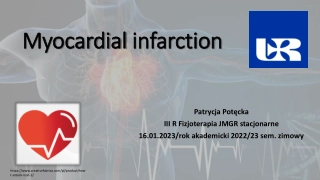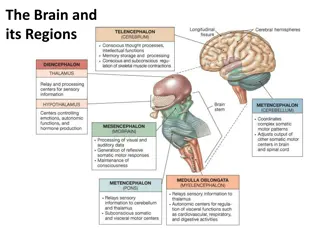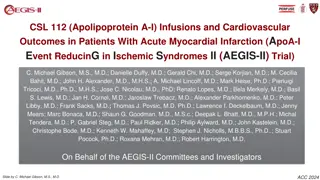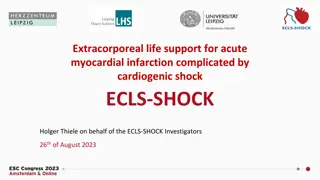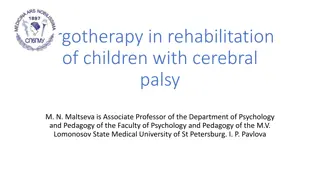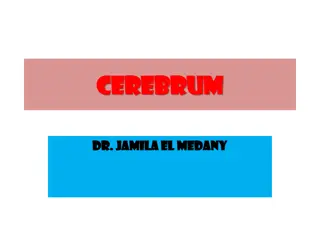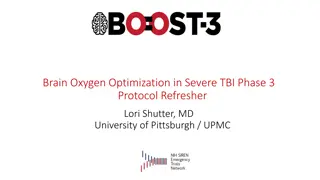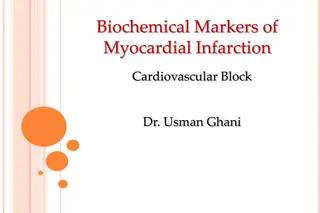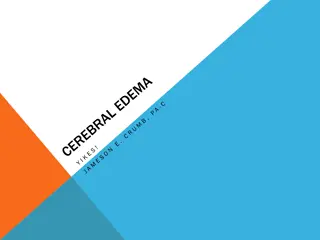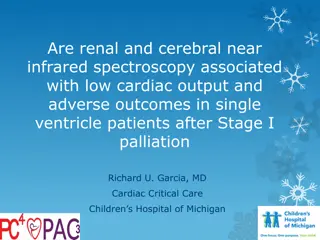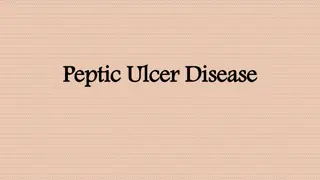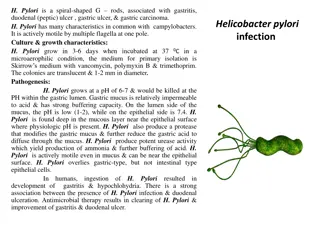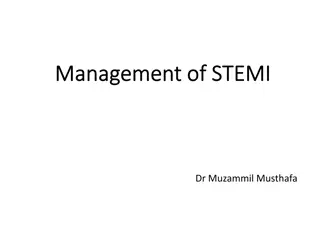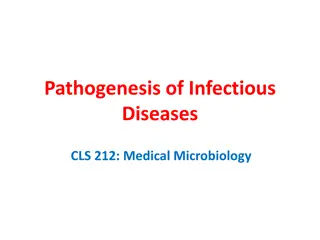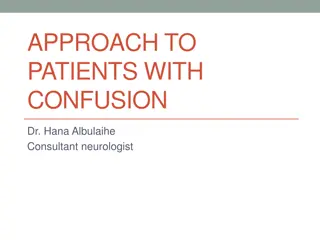
Cell Death Mechanisms in Cerebral Ischemia: Pathogenesis Insights
Explore the intricate mechanisms of cell death in cerebral ischemia, delving into necrosis, apoptosis, oxidative stress, metabolic implications, and neurochemical responses. Learn about risk factors, stroke subtypes, and the role of calcium-induced pathways in brain tissue damage.
Download Presentation

Please find below an Image/Link to download the presentation.
The content on the website is provided AS IS for your information and personal use only. It may not be sold, licensed, or shared on other websites without obtaining consent from the author. If you encounter any issues during the download, it is possible that the publisher has removed the file from their server.
You are allowed to download the files provided on this website for personal or commercial use, subject to the condition that they are used lawfully. All files are the property of their respective owners.
The content on the website is provided AS IS for your information and personal use only. It may not be sold, licensed, or shared on other websites without obtaining consent from the author.
E N D
Presentation Transcript
HbA NH2 H2O2 Cl2O7 KClO3 NAOH CH2O PO4 KMnO4 M E D I C I N E COOH KING SAUD UNIVERSITY Co2 MgCl2 H2O SO2 Doctors slides Doctors notes Important ExtraInformation HCN CCl4 CuCl2 SiCl4 Biochemistry Pathogenesis of cerebral infarction Editing file
O B J E C T I V E S By the end of this lecture, the students should be able to: Identify the possible cell death mechanisms implicated in the pathogenesis of ischemic brain injury Acquire the knowledge of the important role played by oxidative stress and free radicals in the pathogenesis of cerebral infarction Understand the various factors involved in ischemia-induced metabolic stress Identify the Neurochemical changes involved in cerebral ischemia
Cerebral Ischemia (Strokes) subtypes: Stroke Lack or reduction of blood perfusion in certain area in the brain causing death of the tissue . Ischemic Hemorrhagic With 32% global incidence With 68% global incidence Intra-cerebral Thrombotic Subarachnoid Embolic Accumulation in this space the patients describe it as (the worst headache they ever had) The embolism travels from somewhere else mainly from the heart .
Risk factors of strokes: Ischemic stroke risk factors There are a number of risk factors for stroke: 1. Age older than 40 years 2. Heart disease 3. High blood pressure 4. Smoking & Diabetes 5. High blood cholesterol levels 6. Illegal drug use 7. Recent childbirth 8. Previous history of transient ischemic attack People usually survive from it but if it continue for 24 hours it ll be dangerous. 9. Inactive lifestyle and lack of exercise 10. Obesity 11. Current or past history of blood clots 12. Family history of cardiac disease and/or stroke Some increase the risk of one type of stroke (hemorrhagic or ischemic). Occasionally, strokes occur in people who have no risk factors Some increase the risk of both types. Hemorrhagic stroke risk factors 1. High blood pressure 2. Smoking 3. Illegal drug use (especially cocaine and "crystal meth") 4. Use of warfarin or other blood thinning medicines The cell death mechanisms implicated in the pathogenesis of ischemic brain injury
Cell death mechanisms in cerebral ischemia : Necrosis and Apoptosis: Necrosis is commonly observed early after severe ischemic insults Biochemical Responses to Ischemic Brain Injury : Apoptosis occurs with more mild insults and with longer survival periods Oxidative stress Metabolic stress Neurochemical response The mechanism of cell death involves calcium-induced calpain-mediated proteolysis of brain tissue A condition where the intra-cellular calcium builds up Substrates for calpain include: Cytoskeletal proteins, Membrane proteins and Regulatory and signaling proteins the cell death can happen by 2 processes: 1- necrosis: it s not programmed cell death and it s abnormal condition . 2- apoptosis: normal and programmed cell death. Both happen after ischemia depending on the duration and the severity of the trauma which one of these two mechanism will happen .
Oxidative stress The Role of Reactive Oxygen Species (ROS) & Reactive Nitrate Species (RNS) in Normal Brain Physiology: During periods of increased neuronal activity, ROS & RNS diffuse to the myelin sheath of oligodendrocytes activating Protein kinase C (PKC) posttranslational modification of myelin basic protein (MBP) by phosphorylation They are required for essential processes as learning & memory formation They modulate synaptic transmission & non- synaptic communication between neurons & glia They regulate neuronal signaling in both central & peripheral nervous systems They are mainly generated by microglia & astrocytes
Oxidative stress A condition in which cells are subjected to excessive levels of Reactive oxidizing species (ROS or RNS) & they are unable to counterbalance their deleterious effects with antioxidants. It has been implicated in the ageing process & in many diseases (e.g., atherosclerosis, cancer, neurodegenerative diseases, stroke) When you have less O your mitochondria will not be able to produce enough ATP any type of them also there will be no glucose so, the body will go to anaerobic system but the amount of ATP are so much less and that leads to accumulation of lactate. A molecule with one free electron called radicals there are very active and they can interact with fat . There is oxidative stress after ischemia then ROS starts to accumulate . IMPORTANT
Generation of free radicals The brain has a lot of iron and iron can produce free radicals in certain pathological condition.
The brain and Oxidative stress: The brain is highly susceptible to ROS-induced damage because of: High concentrations of peroxidisable lipids Saturated fatty acids that are normally produce free radicals and the brain has a lot of them. Low levels of protective antioxidants High oxygen consumption High levels of iron (acts as pro-oxidants under pathological conditions) The occurrence of reactions involving dopamine & Glutamate oxidase in the brain ATP deficiency leads to shut down of NA/K pump because they are ATP dependent also the Ca /Na channels is also shutting down because there is no gradient difference. this lead to accumulation Na and Ca inside the cell, then the water comes in leading swelling of the neuron, then it ll release glutamate which will activate other near neuron, leading extra activation (excitement) of the neurons .
Effects of ROS and NO Molecular & Vascular effects of ROS in ischemic stroke The role of NO in the pathophysiology of cerebral ischemia 1. DNA damage 2. Lipid peroxidation of unsaturated fatty acids 3. Protein denaturation 4. Inactivation of enzymes 5. Cell signaling effects (e.g., release of Ca from intracellular stores) 6. Cytoskeletal damage 7. Chemotaxis Ischemia leads to abnormal production of Nitric oxide and this may be both beneficial and detrimental, depending upon when and where NO is released . NO produced by endothelial NOS (eNOS) and causes improvement in vascular dilation and perfusion . In this situation its (beneficial) . In contrast, NO production by neuronal NOS (nNOS) or by the inducible form of NOS (iNOS) has detrimental (harmful) effects . Increased iNOS activity generally occurs in a delayed fashion after brain ischemia and trauma and is associated with inflammatory processes . Molecular effects 1. Altered vascular tone and cerebral blood flow 2. Increased platelet aggregation 3. Increased endothelial cell permeability Vascular effects
Metabolic stress The cell starts the anaerobic respiration that lead to acidosis Biochemical changes in The brain during ischemia Sources & consequences of increased cytosolic Calcium in cell injury Ischemia leads to interruption or severe reduction of blood flow, O2 & nutrients in cerebral arteries energy depletion (depletion of ATP & creatine phosphate) Energy depletion due to inhibition of ATP dependent ion pumps which effect membranes depolarization and Perturbance of transmembrane ion gradients . Ca Influx leads to activation of cellular proteases (Calpains) & lipases which further leads to breakdown of cerebral tissue Na Influx K efflux leading to K+-induced release of excitatory amino acids Increased lactic acid in neurons leads to acidosis which promotes the pro-oxidant effect and increases the rate of conversion of O to H O or to hydroxyperoxyl radical
Neurochemical response Biochemical changes in The brain during ischemia The Blood tests in patients with brain ischemia or hemorrhage Following cerebral ischemia, extracellular levels of various neurotransmitters are increased Complete blood count, including hemoglobin, hematocrit, white blood cell count, and platelet count Glutamate Main NT Glycine GABA Dopamine Examples of Potential Biochemical Intervention in Cerebral Ischemia Prothrombin time, international normalized ratio (INR), and activated partial thromboplastin time Thrombin time and/or ecarin clotting time if patient is known or suspected to be taking a direct thrombin inhibitor or a direct factor Xa inhibitor Inhibitors of glutamate release. Ca channel blockers. Nitric oxide synthase inhibitors & free radical inhibition. Calpain inhibitors Blood lipids, including total, high-density lipoprotein (HDL), and low-density lipoprotein (LDL) cholesterol, and triglycerides. Cardiac enzymes and troponin
To summarize Consequences of brain ischemia Ischemic cascade Lack of oxygen supply to ischemic neurones ATP depletion Malfunctioning of membrane ion system Depolarizati on of neurons Influx of calcium Release of neurotransmitters, activation of proteases Further depolarizati on of cells and calcium influx
Summary The lecture talked about 3 main aspects: 1- Types of strokes and their risk factors: 3- The biochemical responses to Ischemic injury: ROS & RNS have important functions in the nervous system. - When cells are exposed to amounts of ROS and RNS, and can t fight them with antioxidants, oxidative stress occurs. - The brain is highly susceptible to ROS damage. - ROS has both molecular and cellular damaging effects. - NO has beneficial vascular effects but harmful neural effects. Hemorrhagic Ischemic Stroke 1- Intracerebral 2- Subarachnoid 1- Thrombotic 2- Embolic Oxidative stress Types 1. Hypertension 2. Smoking Illegal drug use 3. - Ischemia eventually leads to energy depletion mainly due to inhibition of ATP dependent ion pumps which affects the cell membrane. - Influx: Ca , Na Outflux: K - Increased lactic acid acidosis increases conversion of O to H O . Risk Factors Has much more risk factors, thus it occurs more commonly than the hemorrhagic type. Metabolic stress Blood thinning medications like Warfarin 2- Cell death in ischemic injury: - Extracellular NTs are increased: Glutamate - Glycine - GABA - Dopamine - So as intervention we give inhibitors to Ca , Glutamate, NO, free radicals, and calpain. Neuro- chemical response Necrosis Apoptosis observed early after severe ischemic insults In more mild insults and with longer survival periods - - - - Complete blood count Prothrombin time, INR, Activated partial thromboplastin time Thrombin time, Ecarin clotting time Blood lipids (HDL, LDL) - Cardiac enzymes and troponin Required Blood tests Involve calcium-induced calpain-mediated proteolysis of brain tissue, and Calpain includes many proteins; cytoskeletal, membranous, regulatory, and signaling.
Quiz 1) Which of the following cell death mechanisms occurs with more mild insults and with longer survival periods ? 4) Which of the following is not an effect of ROS in an ischemic stroke ? a) b) Phagocytosis c) Apoptosis d) None of them Necrosis a) b) Decrease platelet aggregability c) Increased endothelial permeability d) Inactivation of enzymes DNA damage 2) Which of the following is not a risk factor for ischemic stroke ? 5) ROS & RNS are mainly generated by ? a) b) Past history of blood clots c) Warfarin usage d) Heart disease Recent child birth a) b) Oligodendrocytes c) Schwann cells d) Myelin sheath Microglia and astrocytes 3) The enzyme that converts superoxide to hydrogen peroxide is ? a) b) Superoxide dismutase c) Catalase d) Glutathione peroxidase NADPH oxidase 5-A Q : How can NO have beneficial and harmful effect ? 4-B 3-B Q : Describe the ischemic cascade ? 2-C 1-B Q: What are the vascular effects of ROS ? Suggestions and recommendations Suggestions and recommendations
T E A M M E M B E R S TEAM LEADERS Qaiss almuhaideb Mohammad Almutlaq Rania Alessa Haifa bin taleb Shatha Algehib Nourah Alshabib Ameerah Nyazi
THANK YOU FOR CHECKING OUR WORK Lippincott's Illusrated Reviews Biochemistry 6th E https://www.youtube.com/watch?v=lnYqZZgqxNs https://www.youtube.com/watch?v=lnYqZZgqxNs Don t forget to review the notes PLEASE CONTACT US IF YOU HAVE ANY ISSUE @436Biochemteam Biochemistryteam436@gmail.com

